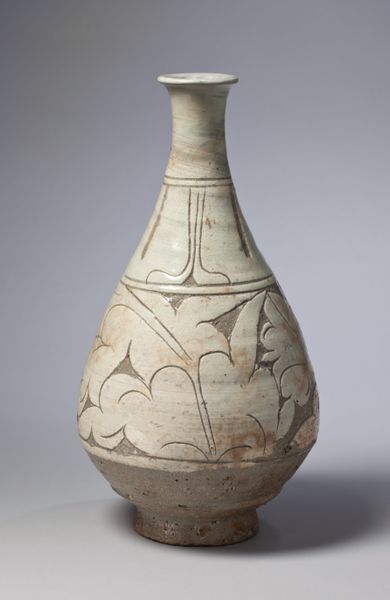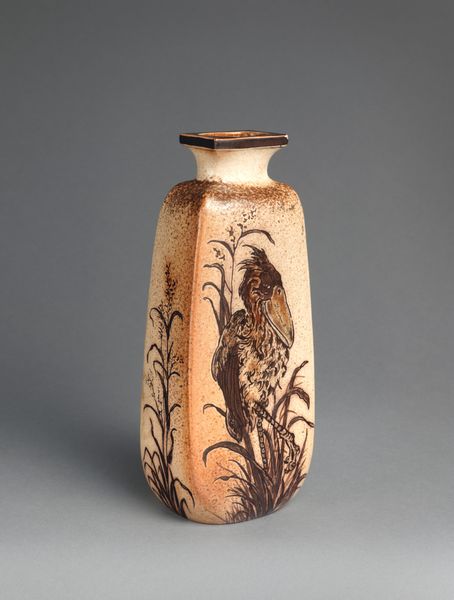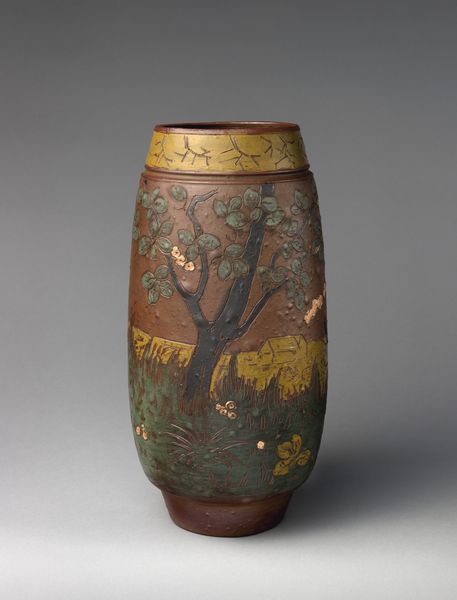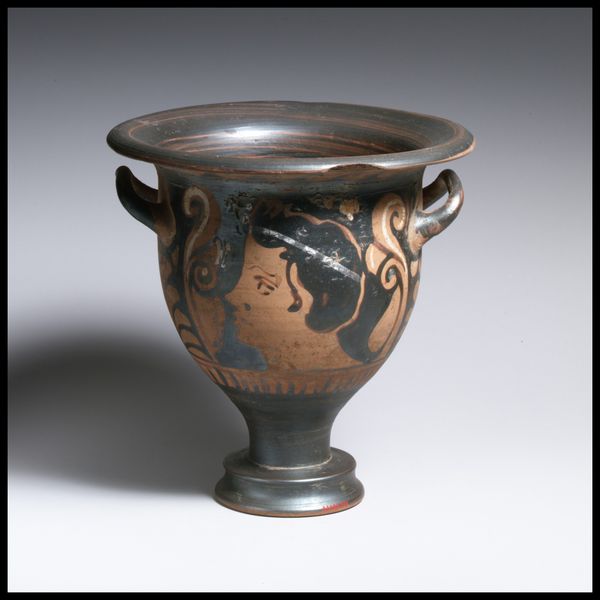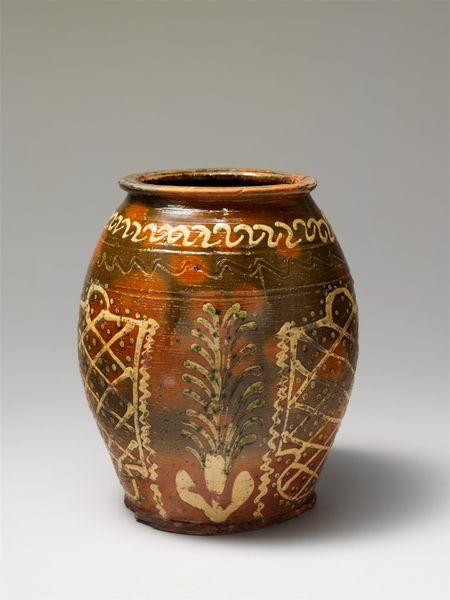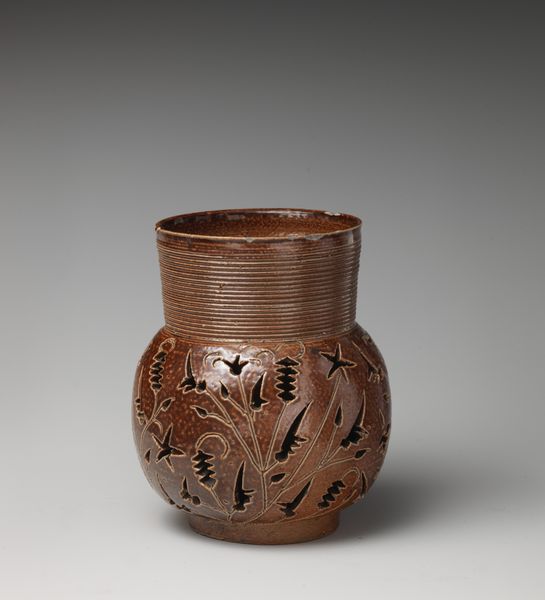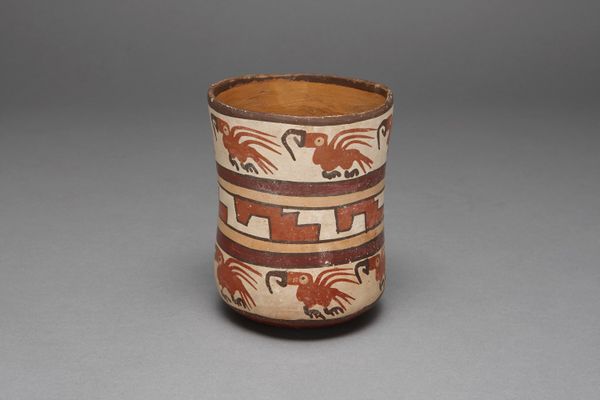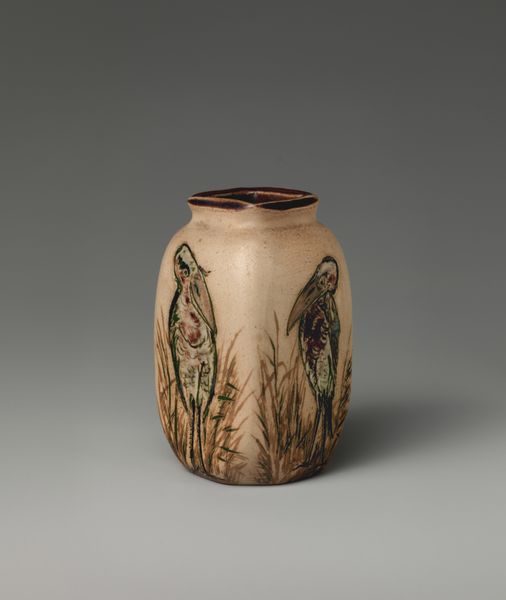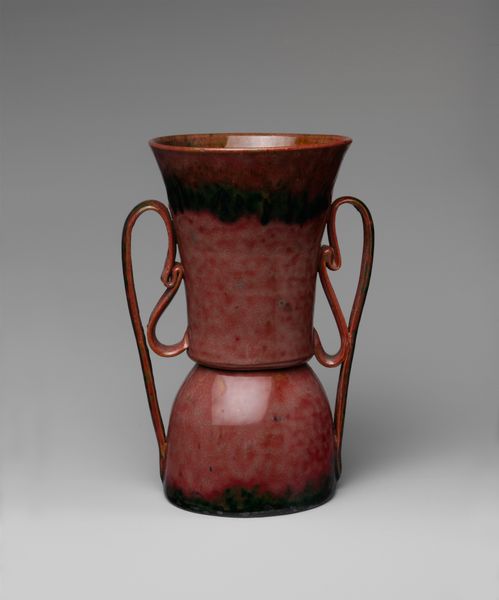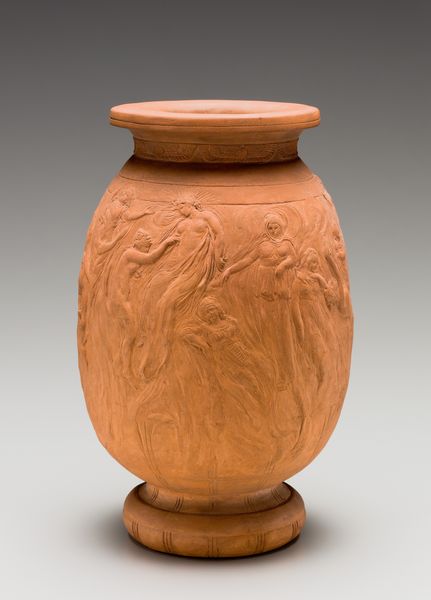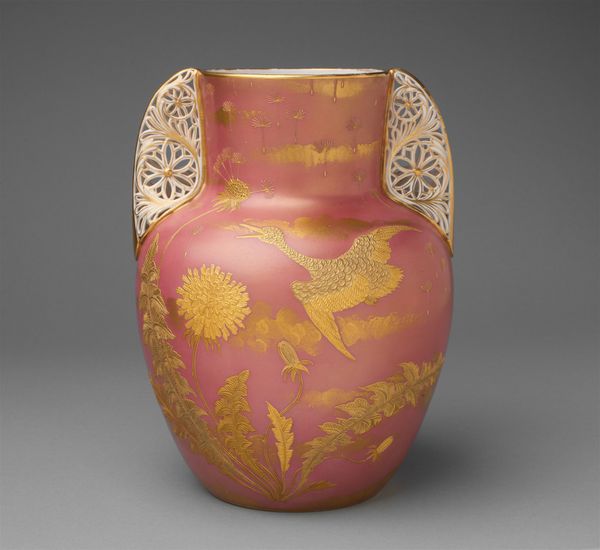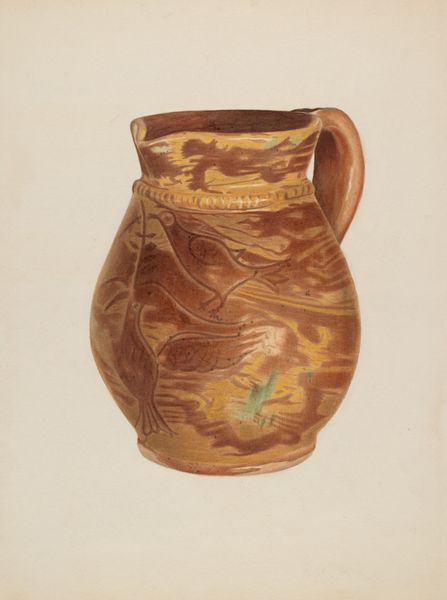
print, ceramic, earthenware, sculpture
# print
#
ceramic
#
earthenware
#
stoneware
#
sculpture
#
product photography
#
decorative-art
Dimensions: Overall (confirmed): 18 7/16 × 6 3/4 in. (46.8 × 17.1 cm)
Copyright: Public Domain
Editor: So this lovely vase, a "Beaker Vase" by Doulton Manufactory, was made in 1874. It's crafted from earthenware with printed decoration, and it resides here at the Met. I’m struck by how the crane images almost feel like they were etched rather than painted. What's your read on this piece? Curator: Well, viewing it through a historical lens, Doulton's production signals the rise of industrial design and the art pottery movement in England. Notice how the naturalistic imagery, those cranes amidst the reeds, references an aesthetic shift. Where had such imagery come from? Editor: I guess I hadn't thought about it that way. You mean like how the rising middle class had access to new forms of art in the public sphere? Curator: Precisely! Think about the context: The proliferation of public museums, art schools... and new modes of art consumption! This vase, reproduced through print, represents art moving from elite circles into wider circulation. Doulton was at the forefront of providing "art for all," aligning with a growing desire for aesthetically pleasing objects in middle-class homes. Does this affect how you interpret it now? Editor: Absolutely. Seeing it not just as decoration, but as a reflection of socio-economic shifts makes the work even more compelling. A mass produced item with pretension to craftsmanship and artistry? I like that contrast. Curator: Exactly. And consider the loaded imagery. Cranes themselves symbolize longevity, wisdom and fidelity across cultures. Doulton shrewdly utilized these traditional symbolic connotations to create accessible yet elevated domestic pieces. Editor: So it’s not just about decorative appeal, but about democratizing art and ideals? Curator: Precisely! By understanding the socio-political currents of its time, we can fully grasp the "Beaker Vase" significance within a larger cultural narrative. Editor: I hadn't considered the historical impact of decorative art, it's made me think about the accessibility of art and how institutions shape our understanding.
Comments
No comments
Be the first to comment and join the conversation on the ultimate creative platform.

